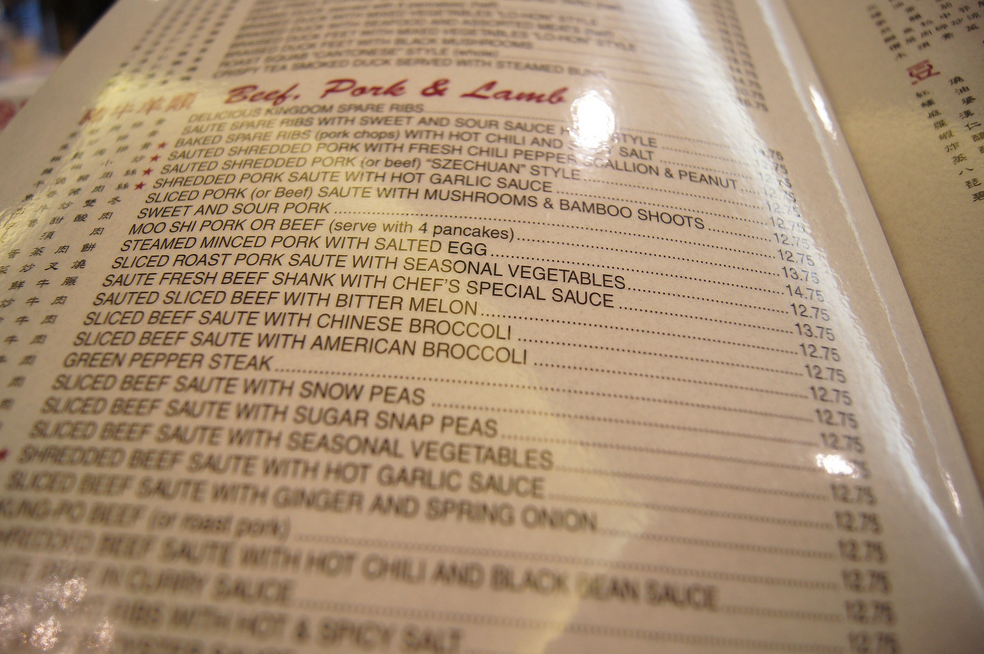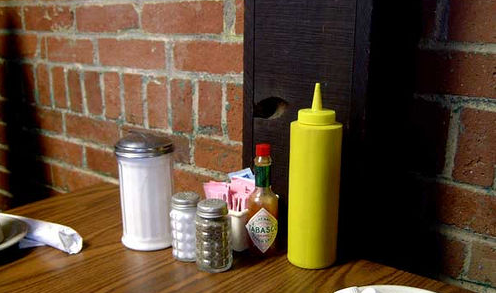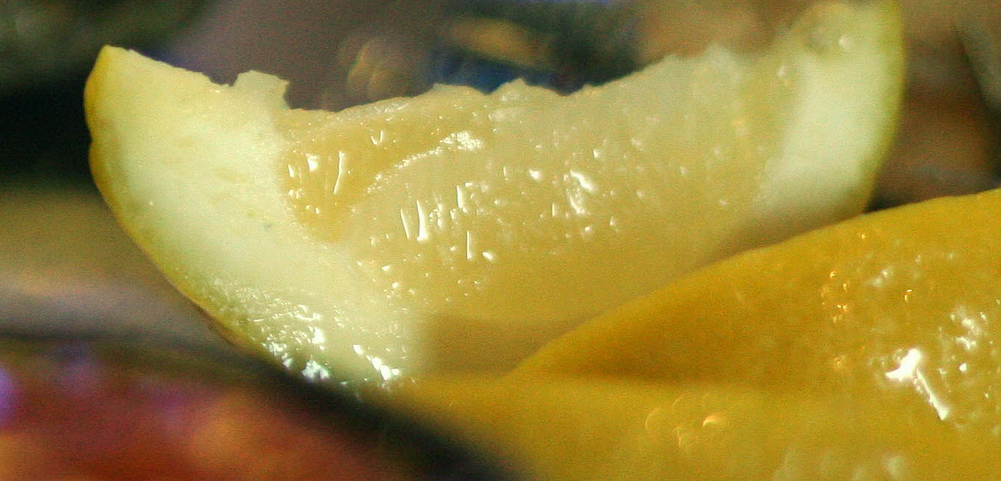4 of the Germiest Things in a Restaurant

By:
Going out to eat is supposed to be a relaxing treat, but when you think about how many germs may accompany the experience, you might consider staying in a little more often.
It's not surprising that restaurants are hubs for pathogens of all kinds, as many people shuffle in and out every day. But you might not realize just how gross some areas of your favorite food joints really are. Here are some of the germiest things in restaurants.
1. Menus
 Flickr/Ted Eytan - flickr.com
Flickr/Ted Eytan - flickr.com
In 2012, ABC News consumer correspondent Elisabeth Leamy visited ten restaurants undercover and swabbed some of the common things people touch when eating out. She found that menus host a ton of germs: On one menu, she found the bacteria that causes staph infections and another menu contained the germs that bring on strep throat. A 2010 investigation for "Good Morning America," led by Leamy and journalist Vanessa Weber, found that menus are the germiest thing in a restaurant, with an average of 185,000 bacteria.
Five years ago, the AARP advised people to look out for germs around menus:
"Have you ever seen anyone wash a menu? Probably not. A study in the Journal of Medical Virology reported that cold and flu viruses can survive for 18 hours on hard surfaces. If it's a popular restaurant, hundreds of people could be handling the menus — and passing their germs on to you. Never let a menu touch your plate or silverware, and be sure to wash your hands after you place your order."
2. Condiments
 Flickr/Matt - flickr.com
Flickr/Matt - flickr.com
Leamy's 2012 investigation found that 50 percent of the salt and pepper shakers were coated in germs. The report contributes the germ-rich environment to the fact that people use them a lot but they aren't cleaned very often.
The "Good Morning America" investigation found that the pepper shakers tested had 11,600 organisms living on them, giving them the second-highest average bacteria count after menus in that particular investigation.
"Sometimes pepper can have a large number of bacteria in general," Dr. Chuck Gerba of the University of Arizona told "Good Morning America." "Bacteria do like pepper. There's stuff to grow there."
3. Ice
 Flickr/Simon Law - flickr.com
Flickr/Simon Law - flickr.com
In 2013, the Daily Mail conducted an investigation that found six out of 10 of England’s most popular restaurants restaurants overall had more bacteria than the restaurants' toilet water. Two companies disputed the investigation results, however, the Daily Mail reported.
"Scientific tests have shown that ice from branches of McDonald’s, Burger King, KFC, Starbucks, Cafe Rouge, and Nando’s all had higher levels of bacteria than samples of water taken from their lavatory bowls," wrote the Daily Mail's Ben Ellery. "Experts say it could be due to them being cleaned more often than the ice machines."
Dr. Melody Greenwood, a former laboratory director for the Health Protection Agency, told the Daily Mail that the investigation should serve as a "warning" to restaurants.
"It is easy to forget ice can carry bacteria because they think it is too cold for germs, but that is far from the truth," she said. "Nasty bugs such as E. coli can lurk in ice machines. In some cases, such as Nando’s, we found double the amount of bacteria we would expect to find [in drinking water]. This is caused by things such as a failure to clean machines and scoops used by staff."
4. Lemon wedges.
 Flickr/Donireewalker - flickr.com
Flickr/Donireewalker - flickr.com
A 2007 study in the Journal of Environmental Health revealed that nearly 70 percent of the lemon wedges found on restaurant glasses contain disease-causing microbes. The researchers discovered this after ordering beverages 21 restaurants, ultimately finding 25 different microorganisms on the 76 lemons they used, including E. coli and fecal bacteria.
The website Snopes, which debunks rumors and contextualizes studies that might be misunderstood, looked into this paper and pointed out that the research didn't reveal how likely a person is to get sick from lemon wedge germs, or whether this has happened before. Regardless, it takes some of the appeal away from decorative fruit placed on glasses.
